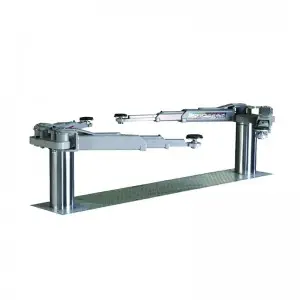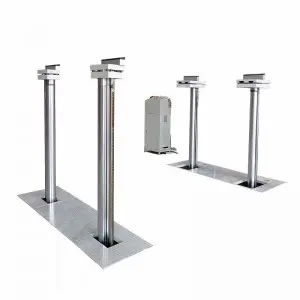
Exploring the Fascinating World of Cylinders: Their Geometry, Applications, and Impact on Engineering and Everyday Life

Exploring the Fascinating World of Cylinders: Their Geometry, Applications, and Impact on Engineering and Everyday Life
Cylinders are fundamental geometric shapes that blend simplicity with complexity in both mathematics and various real-world applications. Imagine a can of soda, the brakes of a car, or even the design of a skyscraper; cylinders play a crucial role in these domains and numerous others. This article will delve into the definition and properties of cylinders, their applications across different fields, their significance in engineering, and their role in everyday life.
What is a Cylinder?

Exploring the Fascinating World of Cylinders: Their Geometry, Applications, and Impact on Engineering and Everyday Life
A cylinder is a three-dimensional geometric figure characterized by two parallel circular bases connected by a curved surface at a fixed distance from each base. The height (h) of the cylinder is the perpendicular distance between the two bases. The radius (r) is the distance from the center of the base circle to its edge. Mathematically, a cylinder can be defined as a set of points in space that are at a constant distance from a line segment, known as the axis of the cylinder.
Cylinders can be classified into two primary types: right cylinders and oblique cylinders. A right cylinder has bases that are aligned directly above one another, creating a uniform shape. In contrast, an oblique cylinder has bases that are not aligned, resulting in a slanted appearance.
Mathematical Properties of Cylinders
Understanding the volume and surface area of cylinders is essential in various fields such as manufacturing, construction, and design. The formulas for calculating these properties are as follows:
– **Volume (V)**: The volume of a cylinder can be calculated using the formula:
\[ V = πr^2h \]
where \( r \) is the radius of the circular base and \( h \) is the height of the cylinder. This formula is derived from the area of the base circle multiplied by the height.
– **Surface Area (A)**: The total surface area of a cylinder can be calculated using the formula:
\[ A = 2πr(h + r) \]
This includes the area of the two circular bases and the curved surface area.
These mathematical properties are not just theoretical; they have practical applications in various fields where space, material, and structural integrity must be considered.
Applications of Cylinders in Engineering
Cylinders have a myriad of applications in engineering that capitalize on their structural and functional characteristics. One of the most prevalent uses of cylinders in the industrial sector is in the design of storage tanks. These cylindrical tanks are designed to hold liquids or gases efficiently and minimize the amount of material required for construction. Their shape allows for even stress distribution when filled, making them stable and efficient.
Additionally, cylinders are integral to mechanical components. Hydraulic cylinders, for example, are devices that use liquid under pressure to create movement. They are commonly used in machines such as excavators, forklifts, and other heavy machinery. Utilizing the properties of cylinders increases the efficiency and reliability of these machines, allowing them to perform demanding tasks under high levels of stress.
Everyday Life and Cylinders
Cylinders not only exist in industrial applications; they are also integral to our daily lives. For instance, many everyday objects, from beverage cans to batteries, are shaped like cylinders due to their efficiency in storage and usage. The cylindrical shape is particularly advantageous for packaging as it maximizes volume while minimizing material used, leading to cost-effective production and distribution.
In architecture, cylindrical structures often symbolize strength and durability. Many historical buildings and modern skyscrapers incorporate cylindrical elements to improve visibility, aesthetics, and stability. One notable example is the cylindrical columns used in ancient Greek architecture, showcasing the balance of form and function that cylinders embody.
Conclusion
Cylinders are more than mere geometric shapes; they are essential components across a multitude of fields. Their fundamental properties make them indispensable in engineering, architecture, manufacturing, and everyday consumer products. Understanding cylinders allows us to appreciate their impact on both technology and life, offering insights into how we can better utilize shapes in innovative and efficient ways. Whether it’s through the optimization of storage systems, the enhancement of mechanical systems, or the elegance of architectural designs, cylinders remain a pivotal aspect of human ingenuity, seamlessly integrating into the fabric of everyday life.quick car jack lift


